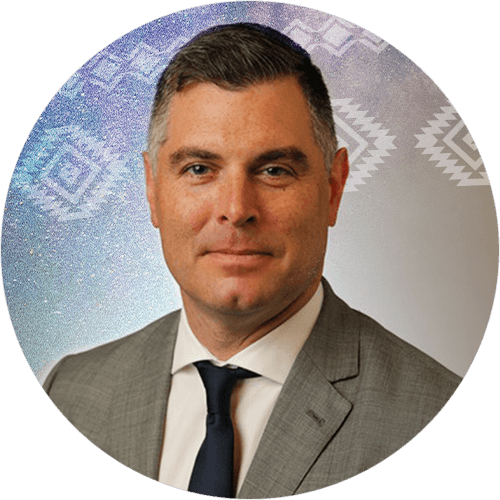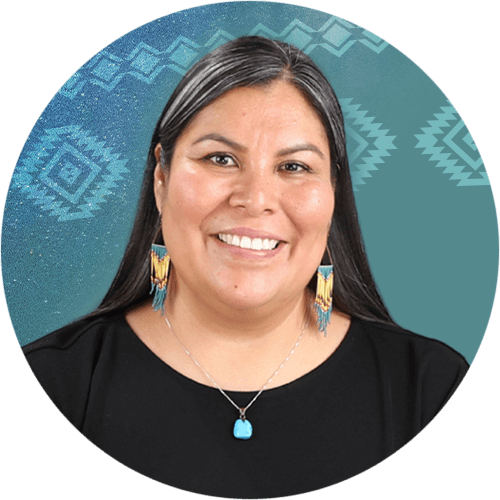Five Ideas to Advance Economic Reconciliation
A panel of Indigenous finance and business leaders shares how corporate Canada can create a more equitable and prosperous future for all

Nearly a decade after the Truth and Reconciliation Commission of Canada challenged corporations to commit to redressing the enduring and harmful legacy of residential schools, economic reconciliation has become a common phrase in boardrooms and in conference halls across the country. Every major bank CEO in Canada is on the record speaking about its importance. It’s front and centre in many major corporations’ environment, social and governance (ESG) reporting. There are events entirely devoted to the topic.
There is, in short, a lot of talk. That’s not nothing — it matters that a subject as important as economic reconciliation is on the agenda of corporate decision-makers. But talk is, as the axiom goes, cheap, and action has been slower than many would like.
There are several reasons for this: Many systemic barriers to Indigenous prosperity have yet to be dismantled. Many companies are struggling to effectively address the issue amid more immediate corporate imperatives. And many organizations simply aren’t sure what to do. “At the end of the day, economic reconciliation doesn’t come in one size fits all, nor is there a unified opinion on how to get there,” Sámi journalist Susan Nerberg wrote in this award-winning 2023 Report on Business magazine feature, going on to add: “Regardless of how you — or your grandmother or the prime minister, for that matter — understand economic reconciliation, Indigenous peoples need all of us to commit to building a country based on equality, equity and fairness.”
What are some steps all businesses can take, now, to advance economic reconciliation? We spoke with five Indigenous business and finance leaders (including two Smith School of Business graduates) to get their ideas for how we can turn rhetoric and good intentions into meaningful change.
Start with knowledge

Clint Davis
Senior advisor, global banking and markets, Scotiabank“The most important thing, in my opinion, is inclusion — and inclusion has to start with education.
“Every single company across Canada should have a comprehensive online or in-person learning requirement dedicated to Indigenous history and reality, and it should be mandatory every year, for all employees.
“Everyone needs to have a better understanding about why this country needs to be doing something around reconciliation — and why it is so important. I’ve worked with a number of companies that are very interested in tapping into the Indigenous market. The first thing I always recommend is to start with some baseline knowledge so that you don’t go in thinking that you know everything, or that your way is how you always do business. You need to get a better sense of how we got here in terms of the strained historical relationships, and you need to get a better sense of the socioeconomic realities that exist in too many communities across Canada.
“But I don’t think people should stop there. This shouldn’t be treated as just another mandatory learning initiative that you click through as fast as you can so you can sign off on your learning obligations for the year. There’s a real opportunity for business leaders to put what they learn into action. That could mean supporting more Indigenous businesses. It could mean actively looking at the huge untapped potential of Indigenous talent. Indigenous people, especially Indigenous young people, represent one of the few growing areas of Canada’s labour force and should be viewed as attractive for any business.
“And that could also mean considering Indigenous leaders for senior roles at your organization, particularly at the board level. Not only do these individuals have the baseline skill set that’s required to be on a board — and I’d probably advocate that most have more than the baseline — but they also bring knowledge of market opportunities, challenges, relationships and proposed solutions. I think that’s huge and of significant value to any business in Canada.”
Centre Indigenous voices

Ashley Richard, MMIE’21
Director of Indigenous entrepreneurship, University of Waterloo’s United College“I think, at the core, economic reconciliation means making sure that diverse Indigenous voices have a meaningful spot at the table from the beginning. In other words, if there are any economic opportunities that can potentially benefit or support Indigenous communities, organizations need to make sure that voices from those communities are at the table right from the get-go.
“This often requires a big shift in the core of organizations — more so than people might realize. It’s not just about, say, hiring an Indigenous program co-ordinator to go do outreach and partnership development and deliver a program. It’s really about making sure that your organization is decolonizing processes and structures that create barriers to Indigenous communities — barriers that you may not even know about.
“It’s also about Indigenizing, which is centring Indigenous ways of knowing and being in how your organization is operating. That can be done in a number of ways, but a big component is making sure that there’s representation on boards, on senior leadership teams and all throughout the organization. It shouldn’t just be on one person to figure it all out.”
Make it a strategic priority

Tracee Smith, MFin’15
President and CEO, Keewaywin Capital Inc.“Believe it or not, a lot of people think economic reconciliation can be achieved just by doing a land acknowledgement. Like, ‘That's good. We did it. We ticked the box, and now we feel good about ourselves.’ But if you really want to do something to advance reconciliation, you have to commit to learning and — beyond that — to doing something about it.
“I believe any organization that does business with Indigenous communities and people should have something in their corporate strategy that addresses their economic reconciliation journey. There’s really no excuse not to. If you’re making money as a result of your work with a community, there’s no reason why you shouldn’t have a corporate strategy around that. If you’re not accountable to it, you’re probably not going to do it. And I would also suggest talking with Indigenous people or having some of us around the table when you develop that corporate strategy.
“I’m not saying everybody needs to centre their corporate strategy around economic reconciliation. It would be great if more people moved towards that and understood why it’s important to do so, but I get that there are some businesses that have nothing to do with anything Indigenous. But even in those cases, wouldn’t it be good to have even just a piece of the company do something strategic to support reconciliation?
“You don’t have to get it perfect. You can at least try putting something about economic reconciliation in your corporate strategy — and you can do it now. That way, you’re at least talking about it, and revisiting it, and holding yourself accountable to doing something.”
Cultivate reciprocal partnerships

Naomi Sarazin
Executive director, Pow Wow Pitch“I’m just going to put it out there: Invest in Indigenous businesses and Indigenous people. This means providing capital. Your investment can make a significant impact on our communities and make a difference for Indigenous peoples. We often hear people say, ‘I want to be able to support Indigenous businesses. Where should I start?’ I’ll take this opportunity to highlight Pow Wow Market, a unique grassroots online marketplace featuring Pow Wow Pitch alumni. It has more than 30 Indigenous-owned businesses and is growing daily. It’s an excellent way for you to shop, learn, support and connect with Indigenous businesses.
“At a higher level, there’s great opportunity for more strategic partnerships between corporations and Indigenous organizations and entrepreneurs. One of our greatest strengths at Pow Wow Pitch is working with corporate partners who want to work with Indigenous peoples — because of economic reconciliation, yes, but also because they love to join us in the journey of supporting Indigenous entrepreneurship. Partnering with Indigenous-led organizations that are already making strides in supporting Indigenous prosperity helps amplify the impact and ensures that efforts are both authentic and effective.
“Creating meaningful partnerships like this helps cultivate reciprocity. Our partners have the opportunity to support our business pitch competition by providing volunteer judges and mentors, who then directly support the Indigenous entrepreneurs that come through our programming. Our mentors frequently say things like, ‘I gained so much through the one-on-one mentorship sessions and conversations with the Indigenous entrepreneurs. They are so inspirational! I feel so privileged to have learned from them, and I hope my knowledge and expertise have been as valuable to them as their insights have been to me.’
“This is where change really happens. Genuine connections and meaningful relationships begin to form simply when companies decide to partner with Indigenous organizations that are already leading the work on a grassroots level with Indigenous peoples and communities. Collaboration and partnering is what helps us walk the path together.”
Just start doing the work

Cory McDougall
Chief operating officer, National Aboriginal Capital Corporations Association (NACCA)“I think it’s easy for non-Indigenous people to get sort of paralyzed by the thought of economic reconciliation: It feels too daunting, or they don’t want to do anything because they don’t want to offend anyone. That’s a bit of a cop-out. If you’re serious about reconciling, there’s some work that goes along with that.
“People like to talk about what they are doing to drive economic reconciliation, and to say, ‘Look at us, we’re doing these really inclusive things.’ But when it comes right down to it, not many people in business are going into Indigenous communities and saying, ‘You know what? Let’s get to know each other and see what our opportunities are.’ We do this with all kinds of different other potential business partners, but for whatever reason, we’re not necessarily doing that engaging in a meaningful way with Indigenous peoples and so, you know, I think people assume that it will be uncomfortable or that they don’t belong there, but that’s not the case. Folks are folks. Be a good person, treat people with dignity, ask some questions and learn what the issues are. Then you can start crafting your solutions together.
“When the pandemic happened, NACCA and a number of other national Indigenous organizations got together and started talking about how to get corporate Canada to do what they said they were going to do around economic reconciliation. How do we get action on the Truth and Reconciliation Commission recommendations? How do we get to implementation of UNDA (the United Nations Declaration on the Rights of Indigenous Peoples Act) and some of the things that the government was committing to? We really felt that it was time for a breakthrough.
“What came out of that was two years of work that resulted in the National Indigenous Economic Strategy (NIES) for Canada. It was one of the first strategy documents developed, designed and delivered by Indigenous people, along with the First Nations Financial Management Board’s RoadMap Project, which came out around the same time. The NIES includes 107 calls to economic prosperity. Some are sort of aspirational in terms of setting the direction where people might change some of their thought processes and others are more specific and really nail down some specific goals. It’s meant to have actions you can see yourself taking, to spark that sense of ‘You know what? I can do that. That’s attainable.’ So, I’d point people towards that as a great place to start.
“And you don’t have to do it all at once. Start with one. Engage your team. Say ‘Let’s have a look at this. This is what Indigenous people have told us they want to do. How can we support that?’ It makes it very simple.”